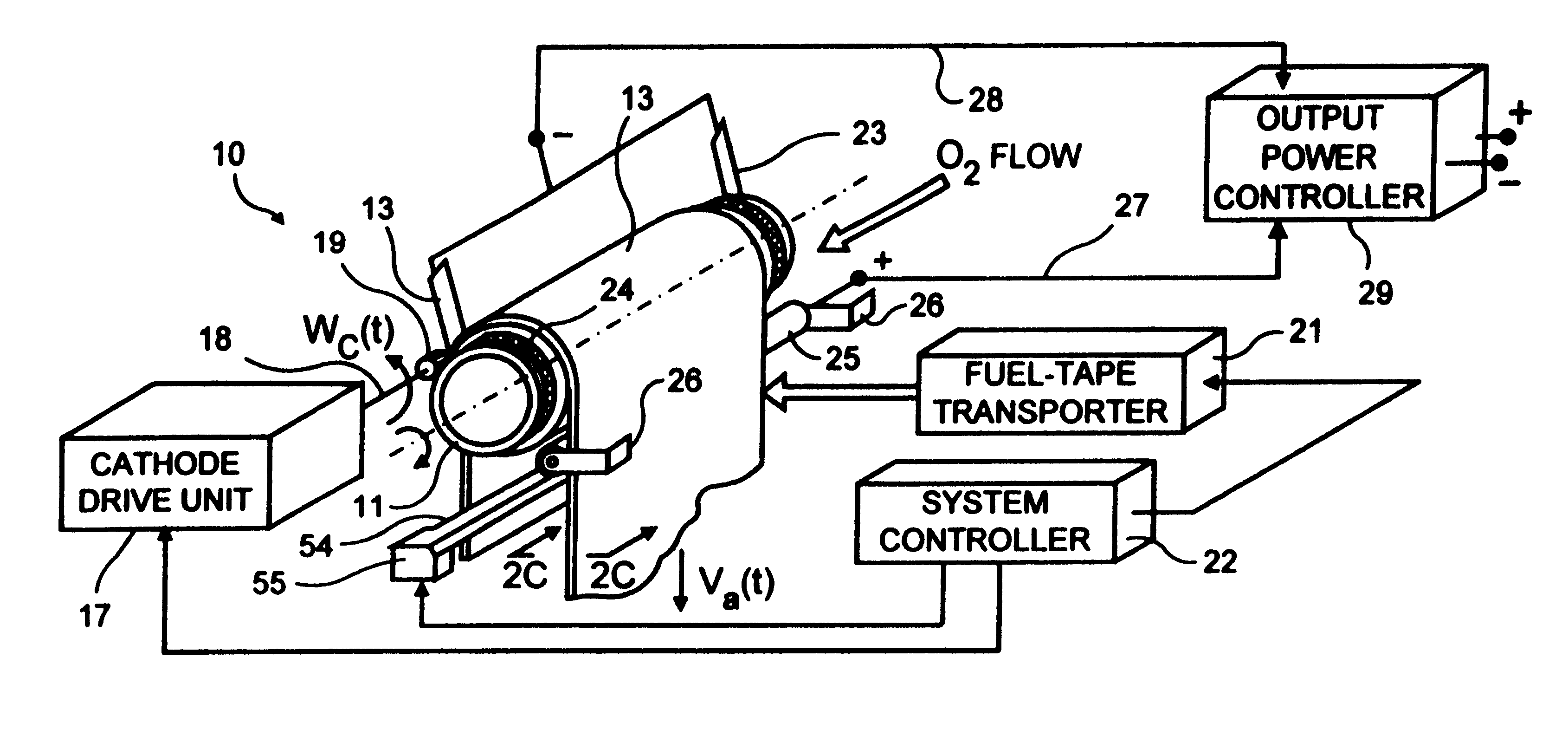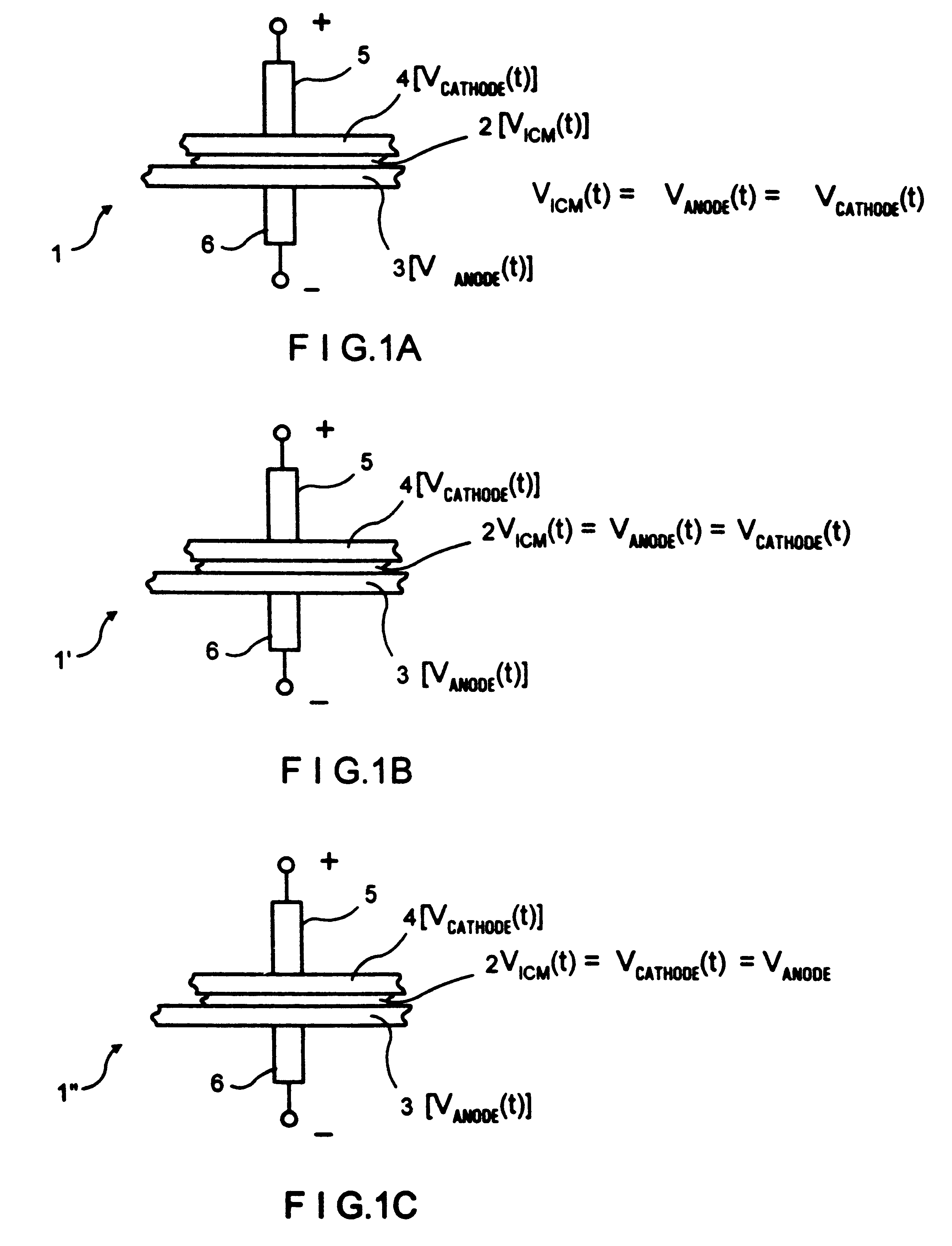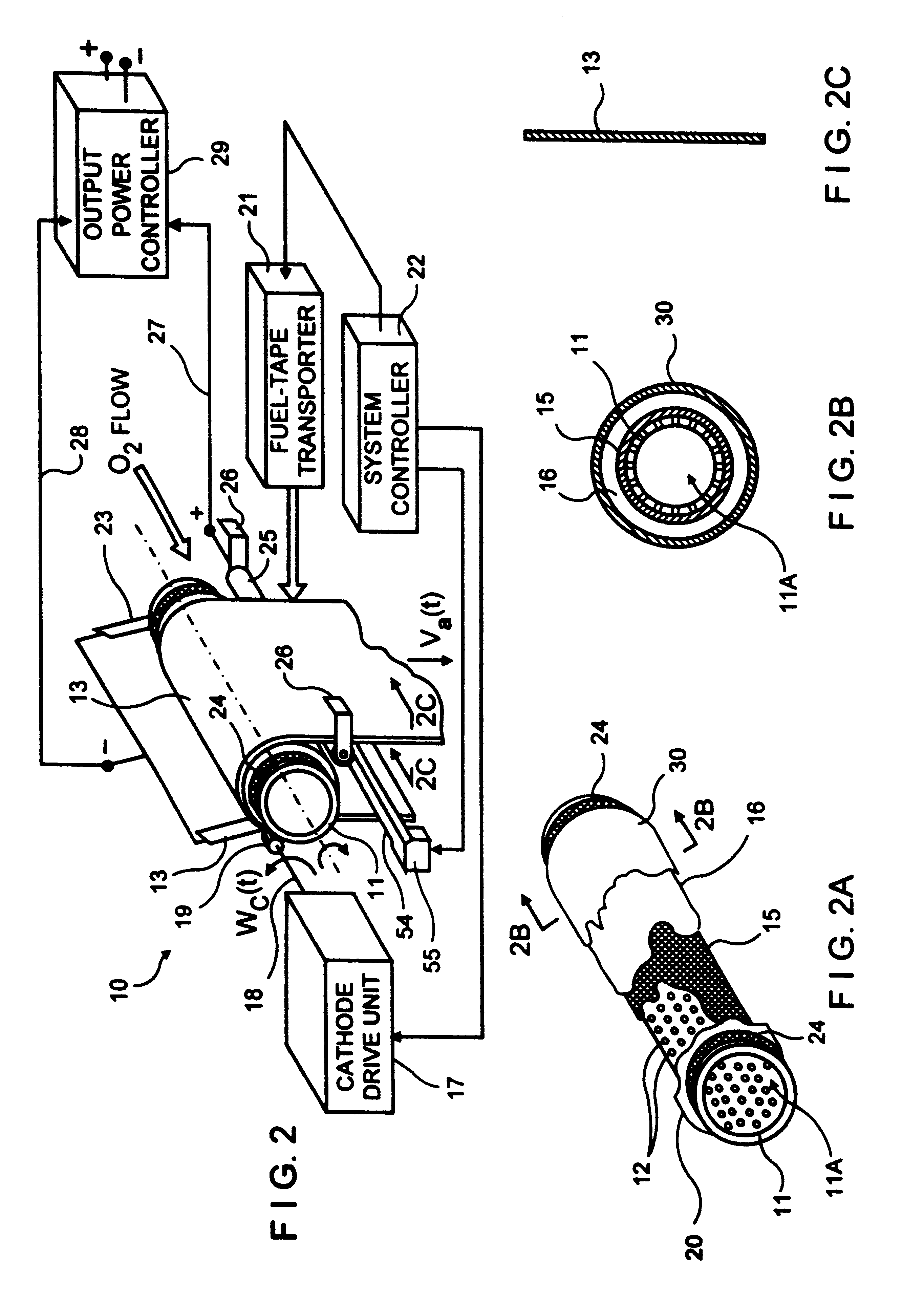Cathode cylinder for use in metal-air fuel cell battery systems and method of fabricating the same
a fuel cell battery and cathode cylinder technology, which is applied in the direction of primary cell maintenance/service, cell components, secondary cell servicing/maintenance, etc., can solve the problems of increasing the electrical power required, increasing the likelihood of damage (or destruction) to the surface of the cathode structure and metal-fuel tape, and increasing the likelihood of damag
- Summary
- Abstract
- Description
- Claims
- Application Information
AI Technical Summary
Benefits of technology
Problems solved by technology
Method used
Image
Examples
second embodiment
FIG. 3 is a second illustrative embodiment of the FCB system, wherein metal-fuel tape is passed over the cylindrical cathode structure hereof which is driven an angular velocity equalized to the velocity of the metal-fuel tape, and wherein the anode-contacting structure engages the inner surface of the metal-fuel tape and the metal-fuel tape has an ionically-conductive coating applied thereon;
FIG. 3A is a partially broken away perspective view of the cylindrical cathode structure of the present invention shown in FIG. 3, in which the cathode structure thereof is exposed to the ambient environment;
FIG. 3B is a cross-sectional view of the cylindrical cathode structure shown in FIG. 3, taken along the line 3B--3B of FIG. 3A;
FIG. 3C1 is cross-sectional view of a section of a first type of metal-fuel tape that can be used in the system of FIG. 3C, showing an ionically-conductive film layer applied to the surface of a thin layer of metal fuel;
FIG. 3C2 is cross-sectional view of a section ...
fourth embodiment
FIG. 5 is a fourth illustrative embodiment of the FCB system, in which metal-fuel tape is passed over the cylindrical cathode structure hereof driven at an angular velocity equalized to the velocity of the metal-fuel tape, and wherein the anode contacting structure engages the outer surface of the metal-fuel tape and the metal-fuel tape has an ionically-conductive coating applied thereon;
FIG. 5A is a partially broken away perspective view of the cylindrical cathode structure of the present invention shown in FIG. 5, in which the cathode structure thereof is exposed to the ambient environment;
FIG. 5B is a cross-sectional view of the cylindrical cathode structure shown in FIG. 5, taken along the line 5B--5B of FIG. 5A;
FIG. 5C1 is cross-sectional view of a section of a first type of metal-fuel tape that can be used in the system of FIG. 5C, showing an ionically-conductive film layer applied to the surface of a thin layer of metal fuel;
FIG. 5C2 is cross-sectional view of a section of se...
PUM
| Property | Measurement | Unit |
|---|---|---|
| thickness | aaaaa | aaaaa |
| thickness | aaaaa | aaaaa |
| porosity | aaaaa | aaaaa |
Abstract
Description
Claims
Application Information
 Login to View More
Login to View More - R&D Engineer
- R&D Manager
- IP Professional
- Industry Leading Data Capabilities
- Powerful AI technology
- Patent DNA Extraction
Browse by: Latest US Patents, China's latest patents, Technical Efficacy Thesaurus, Application Domain, Technology Topic, Popular Technical Reports.
© 2024 PatSnap. All rights reserved.Legal|Privacy policy|Modern Slavery Act Transparency Statement|Sitemap|About US| Contact US: help@patsnap.com










